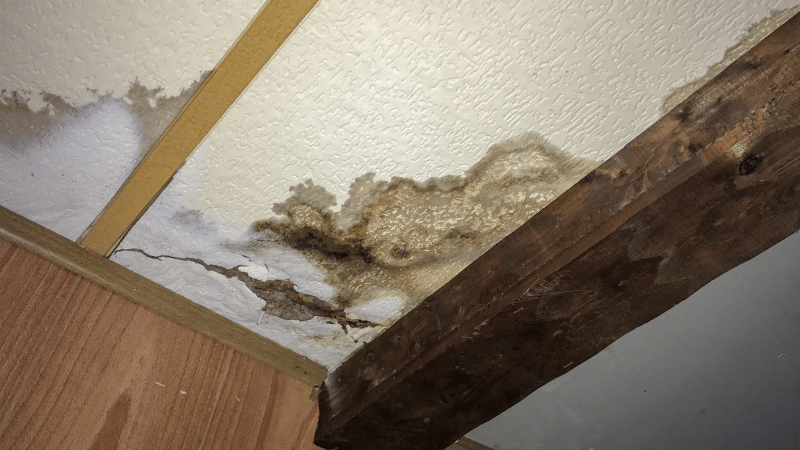Hardwood flooring adds a pleasing, aesthetic touch to the rooms of a home. Being versatile, hardwood floors complement any home décor style, from country to modern to traditional. One element that hardwood floors do not tolerate, however, is water.
Water damage to a hardwood floor leads to lingering problems if left unaddressed. The damage may be slight, such as minor stains, if the wood is exposed to a small amount of water for a brief time. In direct contrast, homeowners will have to replace the floorboards if the water damage is prolonged and extensive.
It is worth noting that hardwood floorings’ polyurethane coatings, which prevent dirt and liquid from contacting the wood, are not fully waterproof. When an insidious drip of water reaches the coating, such as from a continuous moisture leak, it will cause significant water damage to the floor.
What are signs of water damage to hardwood floors?
Liquid spills can lead to water seeping into the flooring, which causes the wood to expand. The boards push together and the edges become higher. Instances like these are known as cupping. Moisture imbalances also can potentially lead to cupping.
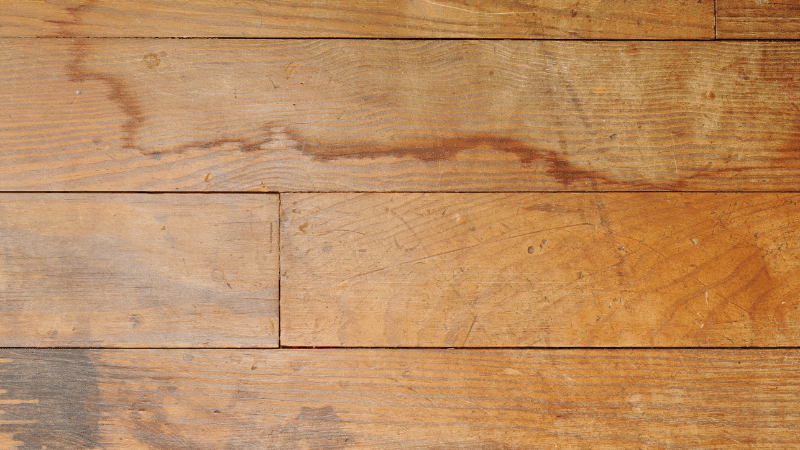
ServiceMater can be reached at (800) 439-8833 to respond quickly to water damage restoration emergencies in San Francisco and the surrounding Bay Area communities.
Crowning of hardwood floors is similar to cupping; the difference, however, in crowning is that the center—rather than the edges—of the wood boards swell when moisture penetrates. Both cupping and crowning lead to what is known as buckling, when the floorboards lift off the subfloor.
Additional signs of water damage to a hardwood floor include cracking along the floors or the floorboards separating. If the wood becomes weakened or soft, water damage has definitely set in, and immediate steps to repair the damage are warranted.
How important is locating the water source?
The first response to water damage should be to determine what its cause is. Is the water leak due to faulty plumbing under the kitchen sink? Is the water damage due to an isolated incident, like a glass of spilled liquid? Promptly fix the leak and prevent future flooring issues.
How should minor water spills be cleaned?
Harmless moisture leaks, such as from rubber rain boots or a spilled glass of juice, should be cleaned up right away. Use a mop to absorb the excess moisture. Apply the heat from a hairdryer or fan directly to the wet area to dry it and the subfloor beneath.
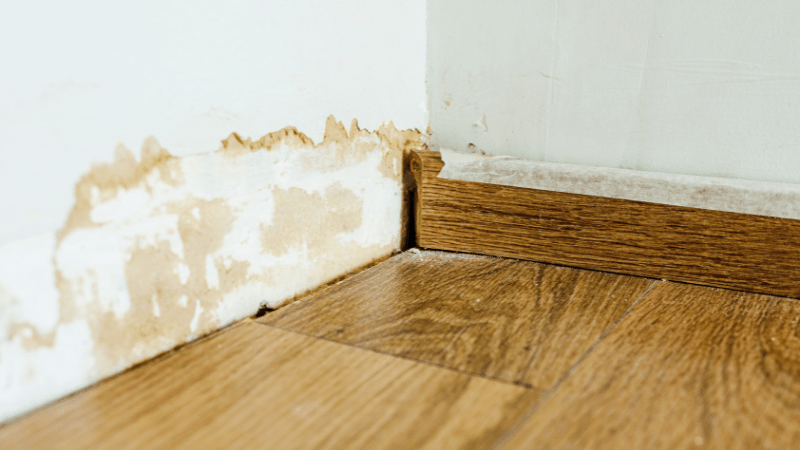
ServiceMaster DRR provides water damage restoration services in San Francisco, CA area. Call us 24/7 at (800) 439-8833 for immediate help.
How should water stains be removed?
Dark stains on hardwood floors result when water seeps through the polyurethane finish and reaches the topmost layer of wood. While removing this type of water damage is possible, it requires a good deal of elbow grease and proper technique.
Sandpaper the dark spot to remove the polyurethane finish. Start with 60 or 80 grit sandpaper and complete the task with 120 grit. Obtain oxalic acid crystals (a bleach), from a local hardware store. Mix warm water with the oxalic acid crystals and brush the solution onto the stain.
Once the stained area is dry, the dark mark should disappear. Refinish the spot with a matching wood stain and apply a coating of polyurethane to seal the repaired floorboard.
If the stain persists, repeat the application several more times. When faced with a stubborn stain that refuses to disappear, it is an indication of a permanent stain. In such a case, the stained hardwood floorboard is irreparable and should be replaced.
How should warped floorboards be fixed?
When dealing with a slightly warped floorboard, the most convenient repair method is to lay a heavy item on top of it for a few days. The warped floorboard should gradually lose its curl. Severely warped floorboards can be fixed by laying substantially heavy items on top.
If either a heavy or extremely weighty item fails to flatten the warped floorboard, the affected hardwood planks should be removed and replaced. In severe cases where significant portions of the floor are warped as a result of water, the whole hardwood floor should be replaced.
What are best practices to prevent mold?
In addition to water damage to a hardwood floor, mold will result in the subfloor without a swift and thorough cleanup. A tool to keep on hand if water spills are frequent is a wet vacuum. This powerful device extracts all excess moisture and curtails the attraction of mold spores.
A sudsy disinfectant should be applied to prevent mold from latching on to the flooring as well as to preserve the condition of the floors. Reuse the wet vacuum to remove all traces of liquid disinfectant. Run a dehumidifier, fans and/or air conditioning to thoroughly dry out the space.
Spilled liquid may seep into the subflooring. In such cases, access the subflooring from the room beneath. The ceiling, especially if it is unfinished, is ideal in helping to dry the subfloor. Direct the fans toward the ceiling to support the drying process of the subfloor of the room above.
Although water damage to hardwood floors is unsightly and structurally damaging, a fast response can mitigate the destruction. Rather than throw a rug over the dark water stain or warped floorboard in attempts to camouflage them, address the water damage professionally.
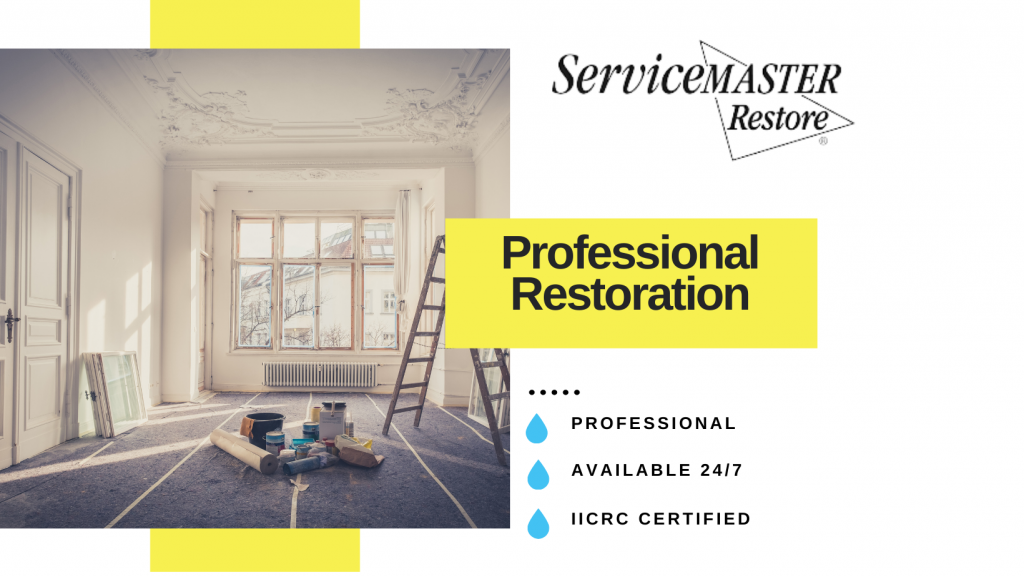
ServiceMaster Disaster Restoration and Recovery is equipped with the advanced equipment, experienced technicians and speedy response times to reliably tackle any degree of water damage. Our water damage restoration services are unparalleled in the industry.
Included in our comprehensive flood cleanup services are content cleaning, pack out services, upholstery cleaning and carpet cleaning. We use the latest hydroxyl technologies, powerful dehumidifiers and air movers, and advanced chemical cleaners to eliminate all traces of excess moisture from a home or business.
When water damage strikes your hardwood flooring or any other area of your home or business in the San Francisco and surrounding Bay Area communities, consult ServiceMaster Disaster Restoration and Recovery. Our technicians provide a quick response and guaranteed availability 24 hours a day, 365 days a year at (800) 439-8833.
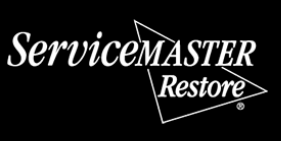
Steve VanDenBerg is the owner of ServiceMaster Disaster Restoration and Recovery. He has over 30 years of experience working within the restoration industry and successfully leading start-ups, turnarounds, acquisitions and mergers, and rapidly growing companies.
Steve earned his BS in Business & Accounting from Calvin University in Grand Rapids, MI and began working for DSI Holdings as their Chief Financial Officer. When Steve began with DSI Holdings, they were running an underperforming ServiceMaster Restore franchise with one location. Steve implemented new policies and procedures for accounting and finance as well as a professional sales plan that increased profits eightfold over his time as the CFO. He was then promoted to President and CEO and in this time, he expanded the company from two locations with $4M in sales to 12 locations and $45M in sales. DSI Holdings became one of the largest disaster restoration companies in the U.S. and helped with major restoration projects throughout the U.S. and around the world.
Steve purchased ServiceMaster DRR in 2015 when the business was in decline. Drawing on his years of experience in turning around struggling ServiceMaster franchises, Steve overhauled our operations, including finance, sales, and marketing, which led to a quick turnaround. Within Steve’s first 24 months, sales increased by 60 percent. Steve also helped greatly improve our operating margins and established a relationship with California’s largest residential insurance company. Under Steve’s leadership, we have become one of the largest disaster restoration providers in California.
Steve has found great success in turning around struggling and stagnant restoration franchises by changing the business model and strategy, greatly increasing sales and profits. Many of the changes he has implemented have even been adopted by the franchisor into their operating model.



